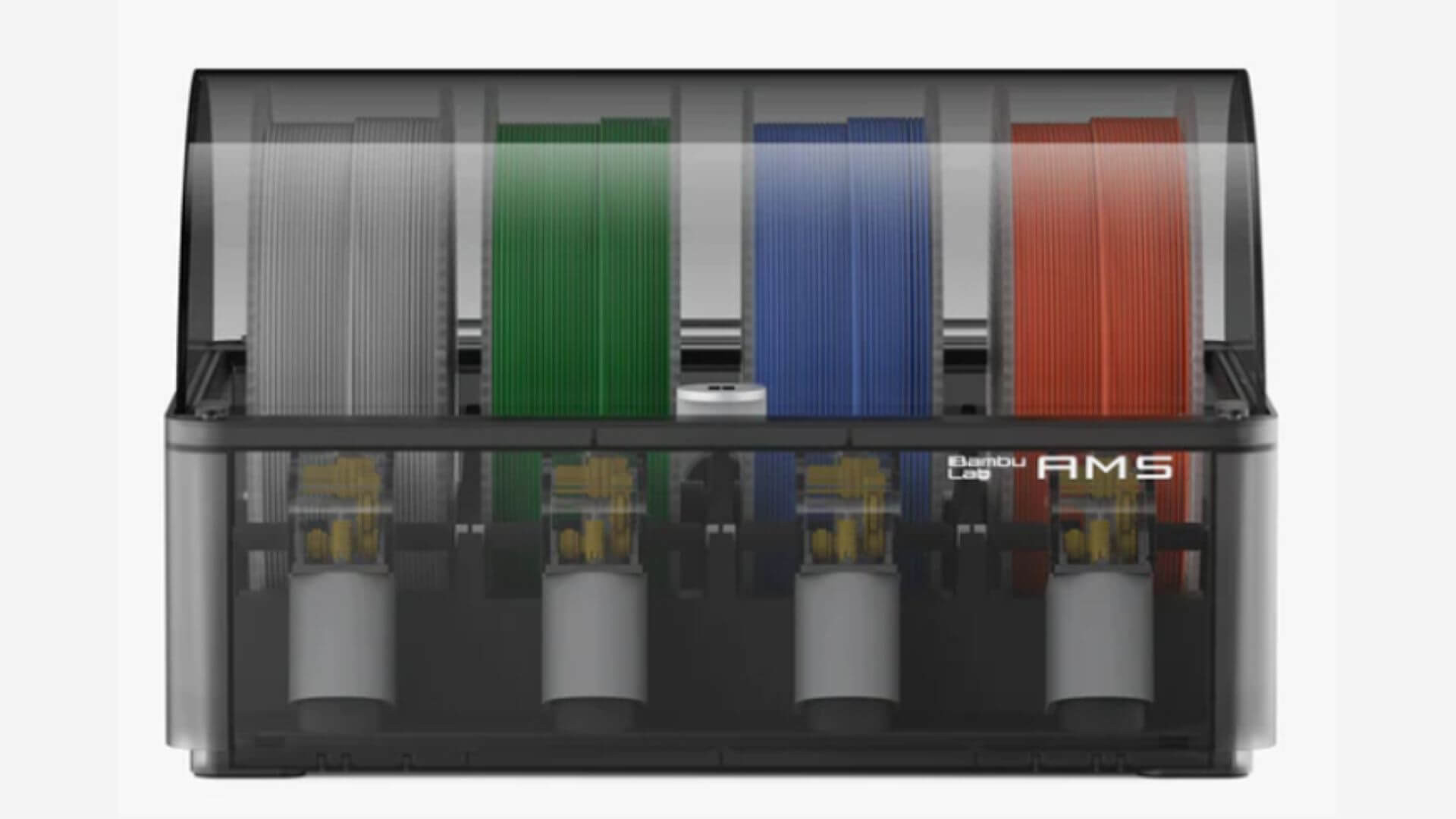3D printing has transformed how we create and innovate, but it's not without its limitations. Enter carbon fiber reinforcement, a game-changer pushing the boundaries of what's possible. When you combine the versatility of professional 3D printers with the strength of carbon fibers, you get parts that are not only lightweight but also incredibly durable.
I'll explain how carbon fiber reinforcement enhances 3D printing in this article. You'll learn about the benefits, from increased strength and stiffness to improved thermal stability. So, let's get started and explore how this powerful combination can elevate your 3D printing game.
What is PAHT CF Filament?
I first encountered PAHT CF filament when tackling a project that required high thermal resistance and exceptional strength. Combining advanced materials, PAHT CF filament offers exciting opportunities in 3D printing.
Material Composition
PAHT CF filament is made from Polyamide High Temperature (PAHT) combined with carbon fibers. This blend creates a filament that's strong and resistant to high temperatures. Adding carbon fibers significantly enhances the filament's mechanical properties, improving stiffness and decreasing warping during printing.
Polyamide High Temperature (PAHT): A high-performance thermoplastic known for its durability and heat resistance.
Carbon Fiber Reinforcement: Increases stiffness and strength, making the printed parts suitable for demanding applications.
In practice, I found PAHT CF filament ideal for printing parts that needed to withstand high temperatures and mechanical stress. Using this filament in your projects can lead to robust and reliable parts.
Mechanical Properties and Performance
Carbon fiber reinforcement drastically transforms the mechanical performance of 3D-printed materials. Strength, stiffness, and durability improve significantly.
Enhanced Strength and Stiffness
Integrating carbon fibers with 3D printing materials boosts strength and stiffness. For instance, PAHT filament infused with carbon fibers increases stiffness, providing reliable and robust parts. One time, I printed a drone frame with PAHT CF; its impressive strength allowed it to withstand hard landings.
Lightweight Yet Durable
Carbon fiber reinforcement maintains lightweight properties while offering enhanced durability. This dual benefit is ideal for applications requiring both strength and minimal weight. The same PAHT CF I used for my drone frame reduced the overall weight, ensuring better performance and longer flight times.
High Thermal and Chemical Resistance
PAHT CF stands out with its high thermal and chemical resistance. These filaments endure extreme conditions, making them suitable for high-stress environments. Recently, creating a heat-resistant bracket for an automotive project highlighted PAHT CF’s excellent thermal properties, ensuring performance stability.
Discover the Advanced Capabilities of Bambu Lab's PAHT-CF Filament
Bambu Lab's PAHT-CF filament combines Polyamide High Temperature (PAHT) with carbon fibers, offering enhanced mechanical properties. As an avid 3D printing enthusiast, I've experienced the remarkable advancements firsthand.
Key Features
Low Moisture Absorption
PAHT-CF maintains mechanical properties even in humid environments. Its water absorption rate is 50% lower than standard PA-CF filaments, which means improved dimensional stability.
Exceptional Layer Adhesion
Higher Z adhesion layers in PAHT-CF lead to superior bonding between layers. This results in more durable prints, making them suitable for engineering parts such as prototypes and fixtures.
High Tensile Strength
The filament offers impressive tensile strength, adding robustness to printed components. This strength is crucial for functional parts that endure stress.
High-Temperature Reusable Spool
Bambu Lab includes a high-temperature reusable spool with every PAHT-CF filament package. This spool withstands the filament's higher printing temperatures, providing convenience for frequent use.
Applications of PAHT CF Filament
PAHT CF filament has become essential for many cutting-edge applications due to its remarkable strength, stability, and performance characteristics.
Aerospace and Automotive Parts
Manufacturers use PAHT CF filament to produce lightweight, high-strength components in the aerospace and automotive sectors. This filament's thermal stability and stiffness make it ideal for parts like brackets and mounting points. I remember a project where I printed a drone frame with PAHT CF filament; it was both robust and lightweight, significantly improving flight performance.
Industrial Tooling and Jigs
In industrial settings, PAHT CF filament helps create durable and precise tooling and jigs. These tools withstand high stress and maintain dimensional accuracy, making them perfect for repetitive tasks. Factories often use these parts to enhance production efficiency, resulting in better performance and reduced downtime.
High-Performance Prototyping
PAHT CF filament offers excellent layer adhesion and tensile strength for high-performance prototyping. These characteristics allow engineers to produce functional prototypes that closely mimic final products. When working on a prototype for a racing car component, PAHT CF ensured the part could handle rigorous testing, saving time in the development process.
Various industries use PAHT CF filament to achieve better performance, reduced weight, and high durability in their 3D-printed parts.
Best Practices for Printing with PAHT CF
Printing with PAHT CF, a filament known for its high-performance capabilities, requires specific considerations for optimal results. I’m sharing some best practices to help you master this material.
Printer Requirements
To print PAHT CF successfully, use a 3D printer equipped with a hardened steel nozzle or ruby-tipped nozzle. These materials withstand the abrasive fibers in PAHT CF.
- Ensure your printer has a heated bed capable of reaching at least 100°C.
- For best results, an enclosed build chamber helps maintain consistent temperature.
- Use a dual-drive extruder for consistent filament feed.
Optimizing Print Settings
Dialing in the right print settings is key for top-notch PAHT CF prints. I usually set my nozzle temperature between 250°C to 280°C. One time, I found 270°C was just right for a large complex part.
- Adjust your print speed to around 40-60 mm/s. Slower speeds improve layer bonding.
- Set your layer height at 0.1-0.2 mm for detailed prints.
- Enable print cooling with fans set at low speeds to prevent warping.
Conclusion
By embracing carbon fiber reinforcement in your 3D printing projects, you're not just enhancing the durability and performance of your creations—you're unlocking a whole new world of possibilities! Whether crafting lightweight drone frames or heat-resistant automotive parts, this powerful combination of materials can elevate your work. So, gear up, get creative, and watch your 3D prints reach new heights of strength and innovation!





